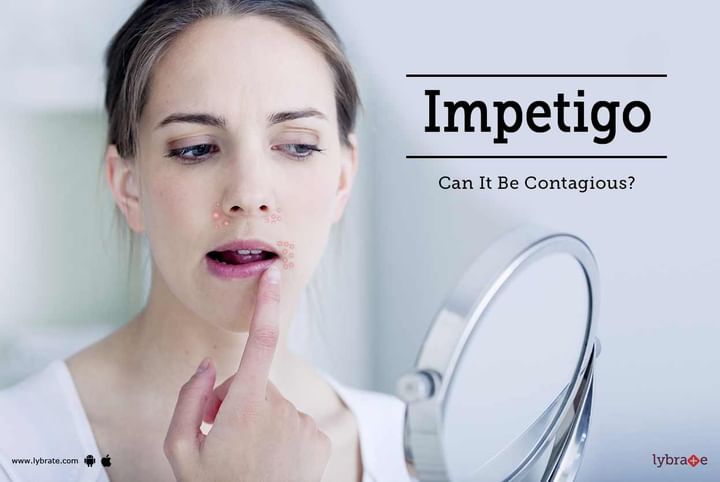Impetigo - Can It Be Contagious?
Impetigo is an extremely contagious infection caused by bacteria that affects the skin. It occurs on the face, neck and hands of young children and infants. Diapers wearing infants tend to get it around the diaper area. It is highly contagious and causes red sores that can break open, ooze fluid and develop a yellow brown crust. Impetigo is a contagious disease and can spread to others through close contact. It can also spread by sharing towels, sheets, clothing, toys or other items. As the skin becomes quite itchy, scratching also spread the sores to other parts of the body.
Impetigo is caused by two bacteria namely streptococcus pyogenes and staphylococcus aureus. There are several different types of impetigo and their symptoms and causes set them apart from each other.
Impetigo contagiosa or nonbullous impetigo is highly contagious and begins with red sores around the nose and mouth. When these blisters burst they leave a weeping, red itchy rash that becomes crusted. It may also lead to swelling of lymph nodes.
Bullous impetigo is common in children below the age of two years. Initially clear blisters appear on the torso, arms and legs which later turn cloudy. The blisters caused by bullous impetigo last longer as compared to blisters caused by other types of impetigo.
Ecthyma is the most serious form of impetigo as it affects the second layer of the skin in addition to the outermost layer. It results in blisters, which are painful and these blisters turns into ulcers or open sores coupled with swelling of lymph nodes.
Symptoms of Impetigo are uncomfortable and embarrassing, especially when the blisters are present on the face. The symptoms of impetigo include red sores, which pop easily and results in formation of yellow crust, fluid-filled blisters, skin lesions, itchy rash and swollen lymph nodes.
Impetigo is highly contagious and spreads by skin-to-skin contact with an impetigo patient. It also spreads by touching things used by impetigo infected patient, such as towels, bedding, and toys. Any injury to skin, insect or animal bites also aggravates Impetigo.
If one is suffering from Impetigo, one can do the following things to prevent it from spreading to other areas of the body, as well as to other individuals. These include usage of antibacterial soap to wash hands, a clean towel or fresh paper towel to dry the body or hands, washing clothes in hot water, cleaning surface areas in the home with antibacterial products, keeping short fingernails, avoiding schools and childcare centres and not sharing personal hygiene items. Children between two to six years of age, regularly attending a daycare or school, participating in activities that involve skin-to-skin contact are at higher risk for contracting Impetigo.
Impetigo can be easily treated with antibiotics. For instances of mild Impetigo, an antibiotic ointment or cream to put on the sores will suffice whereas for more serious infection, one may have to take antibiotic pills.
In case you have a concern or query you can always consult an expert & get answers to your questions!



+1.svg)
